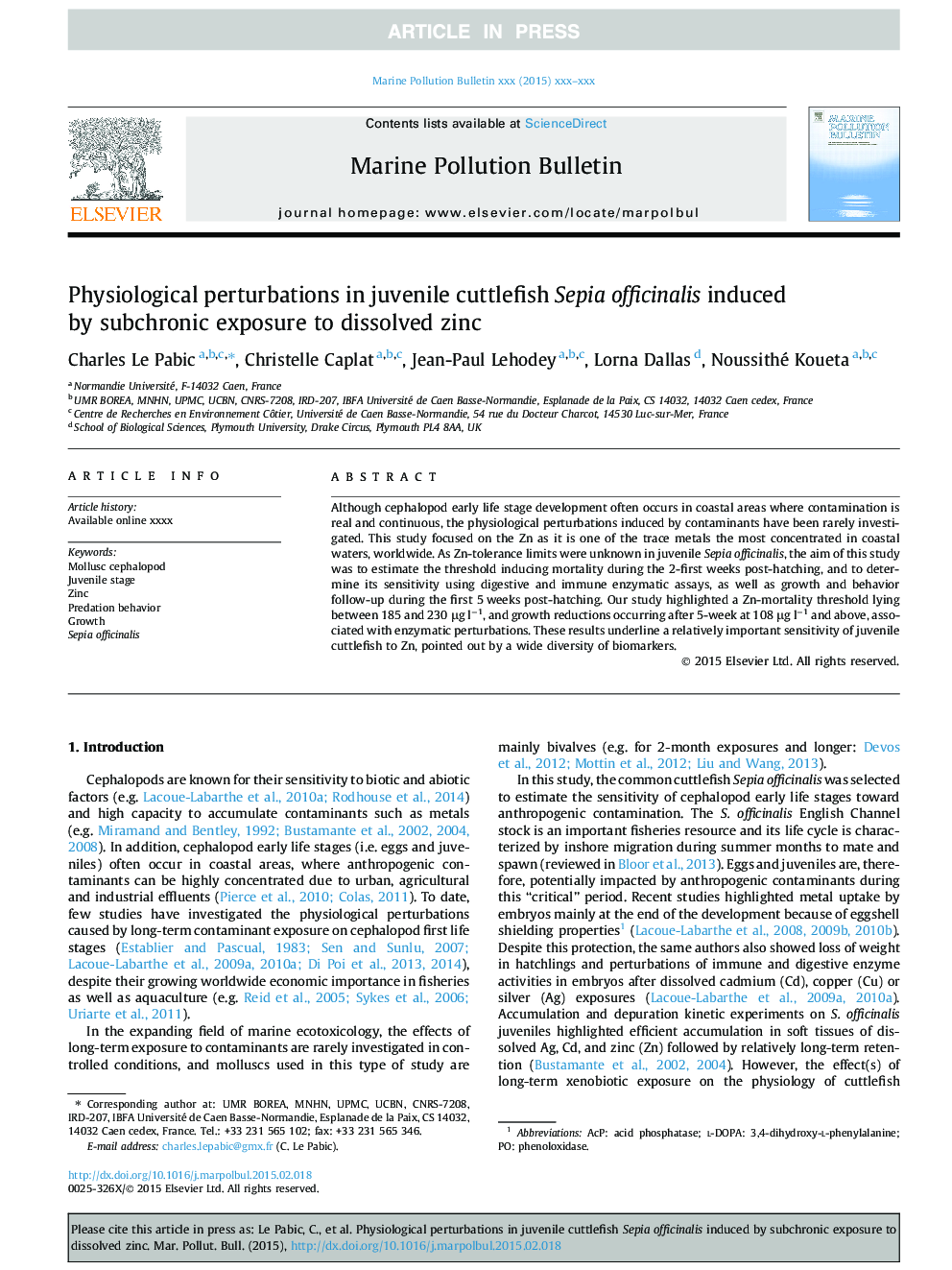| Article ID | Journal | Published Year | Pages | File Type |
|---|---|---|---|---|
| 6356909 | Marine Pollution Bulletin | 2015 | 10 Pages |
Abstract
Although cephalopod early life stage development often occurs in coastal areas where contamination is real and continuous, the physiological perturbations induced by contaminants have been rarely investigated. This study focused on the Zn as it is one of the trace metals the most concentrated in coastal waters, worldwide. As Zn-tolerance limits were unknown in juvenile Sepia officinalis, the aim of this study was to estimate the threshold inducing mortality during the 2-first weeks post-hatching, and to determine its sensitivity using digestive and immune enzymatic assays, as well as growth and behavior follow-up during the first 5 weeks post-hatching. Our study highlighted a Zn-mortality threshold lying between 185 and 230 μg lâ1, and growth reductions occurring after 5-week at 108 μg lâ1 and above, associated with enzymatic perturbations. These results underline a relatively important sensitivity of juvenile cuttlefish to Zn, pointed out by a wide diversity of biomarkers.
Keywords
Related Topics
Physical Sciences and Engineering
Earth and Planetary Sciences
Oceanography
Authors
Charles Le Pabic, Christelle Caplat, Jean-Paul Lehodey, Lorna Dallas, Noussithé Koueta,
